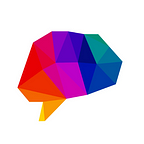Effective collaboration and communication for accessibility projects
In recent years, accessibility has gained a lot of attention, as more and more businesses and organizations are recognizing the importance of making their products and services accessible. However, achieving accessibility can be a complex and challenging process, and it requires a lot of collaboration and communication between different stakeholders.
In this article, we will discuss the importance and challenges of collaboration and communication in accessibility projects, and offer some suggestions on how to work effectively with different stakeholders to achieve accessibility.
Ok, let’s get started!
The Importance of Collaboration and Communication
Accessibility is not a one-person job. It requires collaboration and communication between all individuals involved in the project including designers, developers, testers, product/project managers/owners as well as users with and without disabilities. Collaboration ensures that all stakeholders are working towards the same goal and are aware of each other’s responsibilities and requirements. Effective communication ensures that everyone is informed and aware of the project’s progress, challenges, and changes.
In any accessibility project, collaboration and communication can help achieve the following:
- Better design: Collaboration between designers, developers, and users can result in better designs that are accessible to everyone. By involving users with disabilities in the design process, designers can gain valuable insights into the needs and preferences of users with disabilities.
- Faster development: Communication between developers and testers can result in faster development and testing. Developers can avoid common accessibility issues and ensure that the product meets accessibility standards by providing clear and detailed information about accessibility requirements and testing procedures.
- Improved user experience: Improved user experience can be achieved through collaboration and communication among all stakeholders. Users with disabilities can have a better experience using the product if it is accessible to everyone, leading to increased satisfaction and loyalty.
Challenges to Collaboration and Communication
Collaboration and communication, on the other hand, can be difficult, and several barriers can stymie their effectiveness. Here are some common obstacles to collaboration and communication:
- Lack of Accessibility Awareness
lack of accessibility awareness, which we discussed in the previous post, is one of the primary barriers to effective collaboration and communication in accessibility projects. Frequently, team members are unfamiliar with accessibility guidelines or are unaware of the impact inaccessible software has on users with disabilities. This lack of awareness can result in unintentional accessibility barriers and communication breakdowns among team members.
2. Communication Breakdowns
Another common challenge to collaboration and communication in accessibility projects is communication breakdowns. Team members may not have clear lines of communication or may use different terminology to refer to the same concepts, leading to confusion and misunderstandings.
3. Conflicting Priorities
Finally, conflicting priorities can also pose a challenge to effective collaboration and communication. Team members may have different priorities or may not fully understand the significance of accessibility to the project’s success.
Strategies for Effective Collaboration and Communication
Effective collaboration and communication require effort and dedication. Here are some suggestions for working effectively with different stakeholders in an accessibility project:
- Set clear goals and objectives: Clearly define the goals and objectives of the project and ensure that all stakeholders are aware of them. This will help keep everyone focused on the same goal and avoid confusion or misunderstandings. Establishing accessibility as a priority from the beginning of the project requires buy-in from all team members, including management, designers, developers, testers, and users. By emphasizing the importance of accessibility and its impact on user experience and satisfaction, team members can work together more effectively to achieve accessibility goals.
- Establish a clear communication plan: Establish a communication plan that outlines the communication channels, frequency, and expectations. Regular meetings, check-ins, and status updates can help keep everyone on the same page and ensure that communication is effective. Additionally, it may be helpful to develop a glossary of terms and definitions to avoid confusion and ensure that everyone is using the same language.
- Involve users with disabilities: Involve users with disabilities in the design and testing process to gain valuable insights into their needs and preferences. This can help ensure that the product is accessible from the start.
- Provide clear and concise information: Provide clear and concise information about accessibility requirements and testing procedures. This will help developers and testers avoid common accessibility issues and ensure that the product meets accessibility standards.
- Foster a culture of accessibility: Foster a culture of accessibility within the organization by providing accessibility training and resources. This will help ensure that accessibility is considered in all aspects of the organization’s operations.
Summing Up
Accessibility is highly valued in modern product design and development. To ensure accessibility, it is critical to collaborate and communicate with all stakeholders. This article discusses strategies for overcoming collaboration and communication challenges such as a lack of accessibility awareness, communication breakdowns, and competing priorities. By implementing suggested strategies, organizations can effectively work with different stakeholders and achieve accessibility goals and create more inclusive products. This, in turn, leads to better designs, faster development, and an enhanced user experience.
Have a story of your own? Write with us! Our community thrives on diverse voices — let’s hear yours.
